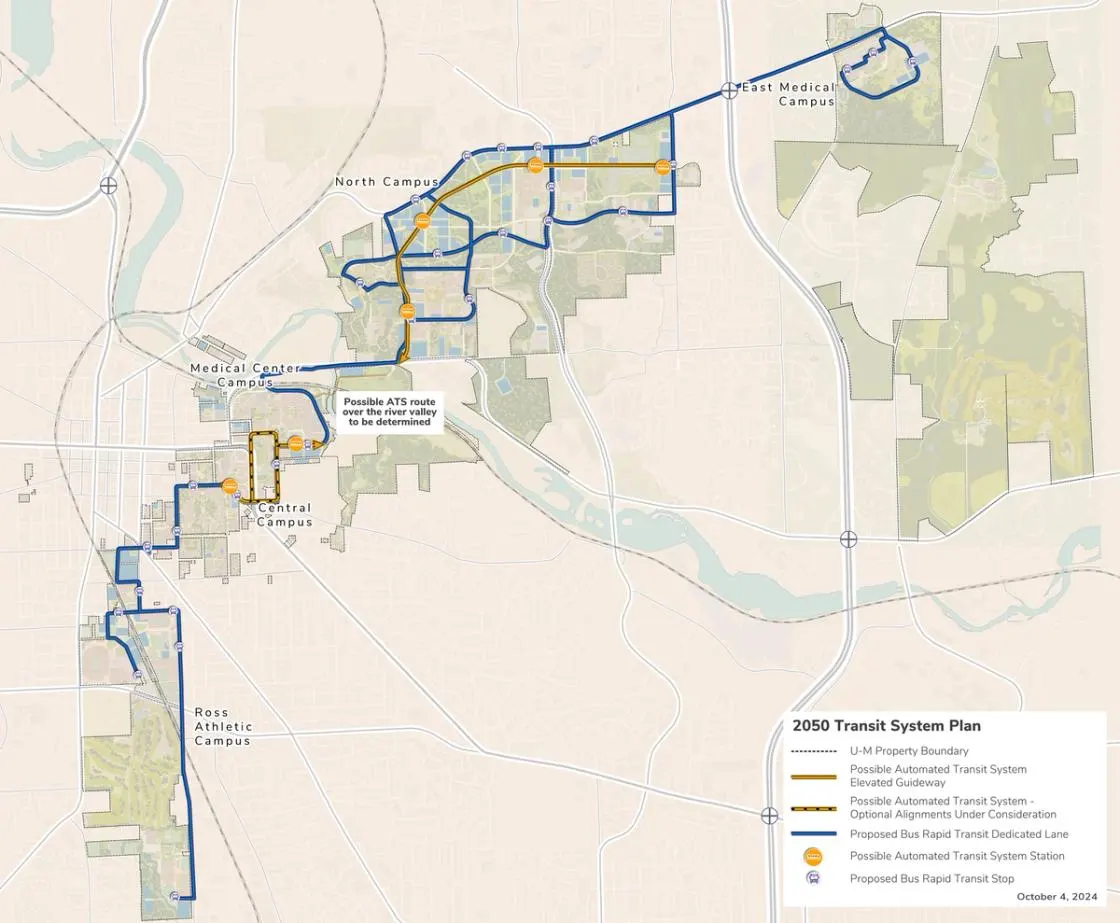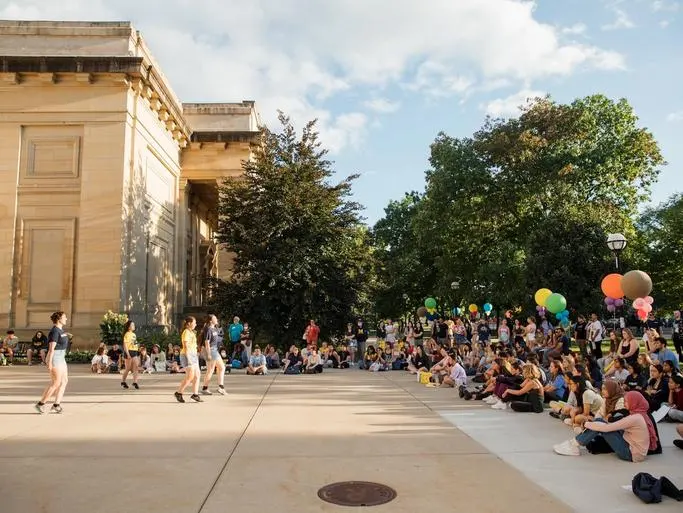Transit

Mobility and connectivity recommendations within the Campus Plan 2050 are based on a comprehensive and unified multi-modal system of accessible, pedestrian, bicycle, transit, and vehicular connections across the Ann Arbor campus. The system aligns with the pathway, bicycle, transit, and vehicular routes of the city grid; the major arterials of the road network in the Ann Arbor area; and the trail system of the Huron River Valley and Nichols Arboretum and Matthaei Botanical Gardens.
The plan also takes into consideration existing transportation infrastructure and identifies future project priorities and/or directions that will help the university coordinate multi-modal improvements and achieve an integrated system. The goal is to offer multiple travel choices, enhance multi-modal connectivity, and shift emphasis away from single- occupancy vehicle use. It proposes non-motorized or active transportation options (such as walking, bicycling, and hybrid work) and transit (proposed BRT and ATS). It also supports U-M’s climate action goals by facilitating non-motorized mobility. The plan proposes a concept for distributed parking stacked under new buildings, as appropriate, a distributed set of perimeter parking structures, as well as a more robust regional public (not U-M) transit system.
U-M’s vision for a sustainable and accessible transportation network requires tackling interconnected challenges and exploring data-driven solutions. Moving away from reliance on personal vehicle travel toward a system that encourages walking, biking, and transit will offer the potential to reduce congestion, enhance community experience, and achieve emissions goals for U-M and the City of Ann Arbor. Achieving this vision in partnership with the City of Ann Arbor will include:
Transform Transit
- Enhance reliability, comfort, capacity, and efficiency by means of dedicated bus lanes, queue jumps, and tactical infrastructuredeployment like signal modifications on key roads. This includes South State Street, North University Avenue, Observatory Street, East Medical Center Drive, Plymouth Road, and North Campus areas.
- Explore the implementation of a proposed bus rapid transit (BRT) system, along with a possible automated transit system (ATS), to reduce congestion, enhance speed and reliability, and decrease the number of personal vehicles on campus. These two systems will be closely coordinated to ensure seamless integration and maximize efficiency.
Strengthen Non-Motorized Networks
- Complete missing connections in the pedestrian and bicycle networks to create seamless and convenient non-motorized travel options. This includes building additional bridges and underpasses to support connectivity where geography prevents physical connections.
- Enhance existing pathways based on user needs and demand; prioritize comfort, safety, and accessibility.
Promote Perimeter Campus Parking
- Create additional ADA-compliant accessible parking.
- Integrate remote parking options that connect directly to the improved transit, pedestrian, and bicycle networks.
- Encourage individuals to utilize remote parking and/or minimize the need for personal vehicle trips by implementing incentives and educational programs and by creating a seamless transit network that is an attractive and viable alternative to on-campus parking.
The mobility recommendations include new and improved infrastructure that provides and enhances multimodal transportation options within and between the U-M campus areas in support of Campus Plan 2050 goals. The recommendations include the following modes, in addition to traditional buses and personal vehicles:
- Bus Rapid Transit (BRT) - a high-capacity public transportation system that utilizes dedicated lanes, priority signaling, and other infrastructure improvements to provide faster, more reliable bus service. A proposed BRT aims to offer a more flexible system at a lower cost in comparison to light rail or underground subways.
- Automated Transit System (ATS) - a network of automated vehicles or guided transit systems that operate on dedicated tracks or guideways. These systems often use advanced technologies such as sensors, computer control, and automation to provide efficient and convenient transportation solutions, particularly in dense urban areas.
- Active Transportation - any form of human- powered transportation, such as walking, cycling, or scootering that emphasizes physical activity as a means of transportation, promoting health and environmental sustainability. Active transportation infrastructure includes sidewalks, bike lanes, multi- or shared-use paths, cycle tracks, bridges, underpasses, and trails.
Next Up:
-

Campus Arts
Campus Plan 2050 is envisioning a campus canvas for the arts.
